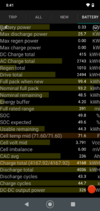So, just installed the MX+ and EV Offer cable.
I followed the diagram on the EV Offer site. I did not have to remove the charging pads, just the drop down panel below the center screen.
Only two snap connectors. Used care, took my time, and a wide trim removal pry tool.
A fair amount of effort to tuck the cables and MX+ in, but they went under the center screen and in front of the charging pads ok. I recommend actuating the center screen to ensure nothing will get pinched.
Good work!
I do not know if there is s difference to mine ‘23 MSP, but in my case the most easy install must be to remove the charging pad. I also do not see how to connect the cable without removing the charging pad console.
(Mostly ment for others that are to do it.)
I hope the MX will not require unplugging, as that would be time consuming.
Most probably not needed.
I have removed it a few times (friends needing DTC’s read/reset on not Teslas). Not a problem in my way with removal of the charging dock.
With all the data on the Refresh MS energy screen and Service menu, the main reason for installing SMT for me is to see the nominal and new pack numbers to compare with Teslafi and Tessie and Recurrent.
I made a new battery tab, and screen grabbed. See below.
I would welcome comments on my results.
93.2 kWh would be about 6% degradation and would be about the expected for a 1 to 1.5 year old car that is charged to 80% or so daily in a about average climate.
I have a slight memory of you charging ‘low’ ? (I might mix up members though)
How old is the car, build date?
If it is ~ 1.5 years we could expect about 4% loss from time if the SOC was at or below 55% most of the time.
The cyclic aging from your 45 FCE cycles can be more or less regarded from (less than 1%)
I know a few other MSP, one thats soon to be one year from delivery, with ~ 94.3 kWh right now (he charge like always, 80-90% or so I think).
I have had my MSP for six months, and it is soon 8 months since build date (3/27/2023). It was an inventory car when I bought it.
But since this spring the new regulations for overseaes shipping prohibits high SOC during the shipping. Tesla has started to give a 150km free SuC ticket to compensate as they do not charge them for delivery.
I got mine with 42%, so quite sure it was at low SOC during the shipping and the time in inventory.
I have just passed 10K km and the NFP was 97.9kWh yesterday, and nominal remaining at the last full charge was 98.4.
The reason for having low degradation is the low average SOC. I charge to 55% daily, and higher charges is done just before the drive, so the time at SOC > 55% is low.





